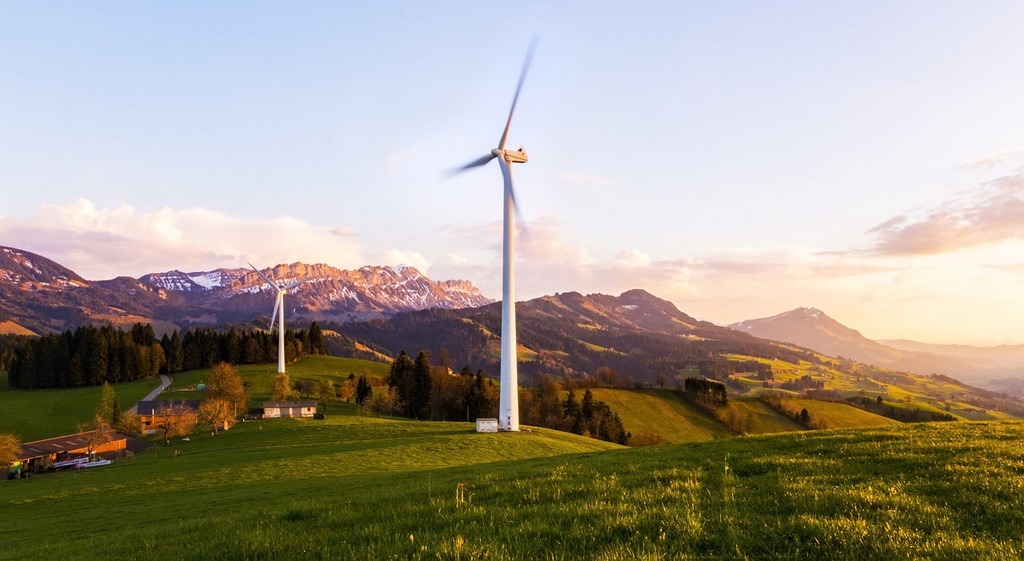As the world faces mounting environmental challenges, the need for sustainable and eco-friendly energy sources has never been more urgent. Renewable energy has emerged as a viable solution to reduce dependence on fossil fuels, decrease greenhouse gas emissions, and create a cleaner future.
In this comprehensive guide, we explore what renewable energy is, its types, benefits, challenges, and the role it plays in shaping a sustainable future.

What is Renewable Energy?
Renewable energy comes from natural sources that replenish themselves over time. Unlike fossil fuels, which take millions of years to form and contribute to pollution, renewable energy sources are sustainable and environmentally friendly.
The primary sources of renewable energy include solar, wind, hydro, geothermal, and biomass energy.
Types of Renewable Energy
1. Solar Energy
Solar energy harnesses power from the sun using photovoltaic (PV) panels or solar thermal systems. It is one of the most abundant and accessible forms of renewable energy.
Advances in solar technology have made it more efficient and affordable, making it a popular choice for both residential and commercial use.
2. Wind Energy
Wind energy is generated through wind turbines that convert wind’s kinetic energy into electricity. Wind farms, both onshore and offshore, have become increasingly common due to their efficiency and minimal environmental impact.
3. Hydropower
Hydropower, or hydroelectric energy, uses the movement of water – typically from rivers or dams – to generate electricity. It has been one of the oldest and most reliable sources of renewable energy.
4. Geothermal Energy
Geothermal energy taps into heat stored beneath the Earth’s surface. It is used for heating and electricity generation and is considered one of the most consistent renewable energy sources.
5. Biomass Energy
Biomass energy is derived from organic materials such as wood, agricultural crops, and waste. It is burned to generate heat or converted into biofuels for transportation and industrial use.
Benefits of Renewable Energy
- Environmental Sustainability: Reduces greenhouse gas emissions and reliance on fossil fuels.
- Economic Growth: Creates jobs in manufacturing, installation, and maintenance.
- Energy Security: Reduces dependence on imported fuels.
- Lower Energy Costs: Long-term savings due to lower operational and maintenance costs
- Health Benefits: Reduces air pollution, leading to improved public health.operational and maintenance costs
Challenges of Renewable Energy
While renewable energy has many advantages, it also faces challenges:
- Intermittency: Solar and wind energy depend on weather conditions, leading to fluctuations in power generation.
- Storage Issues: Effective energy storage solutions are needed to balance supply and demand.
- High Initial Costs: Although costs are decreasing, the initial investment in renewable energy infrastructure can be high.
- Land Use and Environmental Concerns: Large-scale renewable projects may require significant land and resources.
The Future of Renewable Energy
With continued advancements in technology, policy support, and increased investment, renewable energy is set to dominate the future energy landscape.
Governments and industries worldwide are committing to clean energy initiatives, setting ambitious targets for carbon neutrality, and investing in innovations such as smart grids and energy storage.
Renewable energy is not just an alternative; it is the future of energy. By embracing sustainable solutions, we can mitigate climate change, reduce pollution, and build a healthier, more prosperous world.
As individuals, businesses, and governments continue to adopt renewable energy, we move closer to a cleaner and more sustainable future.
Are you ready to make the switch to renewable energy? Let us know your thoughts in the comments below!
